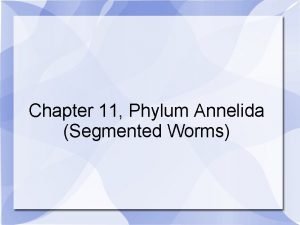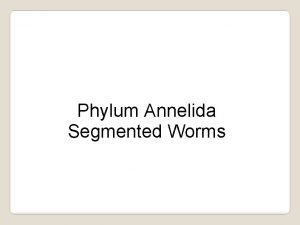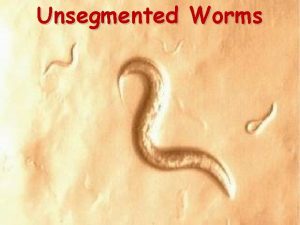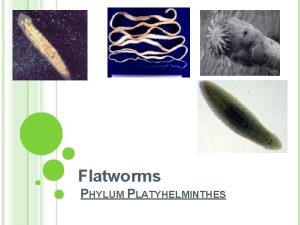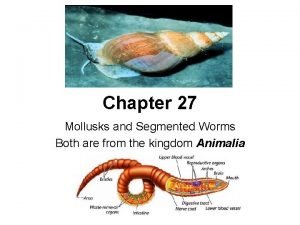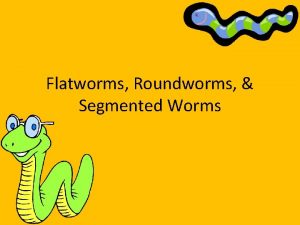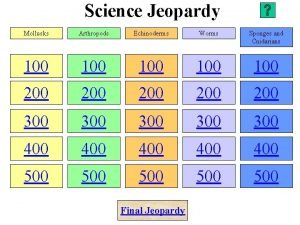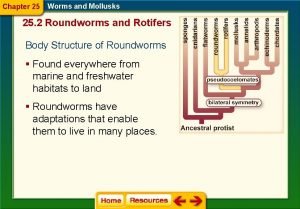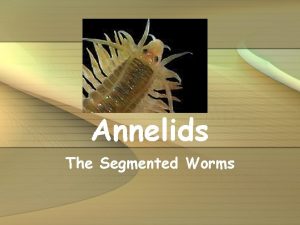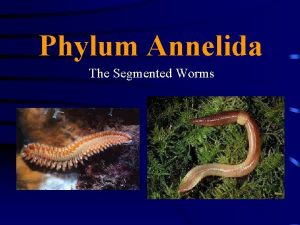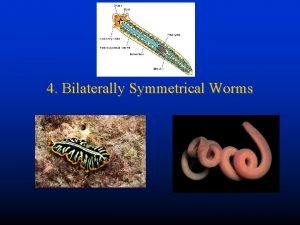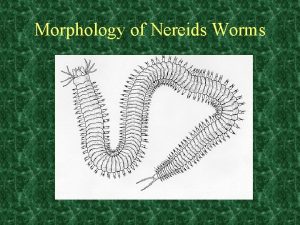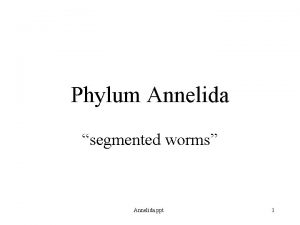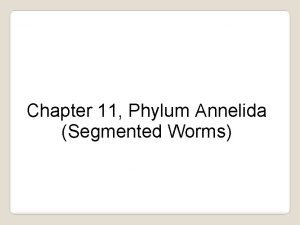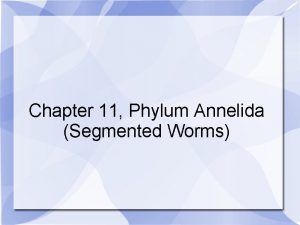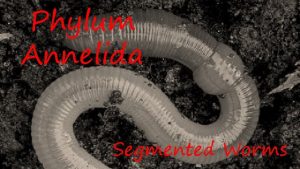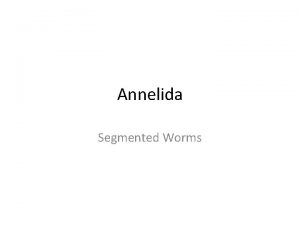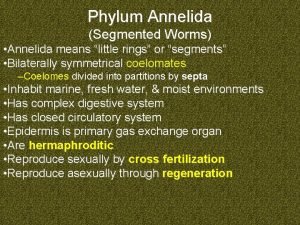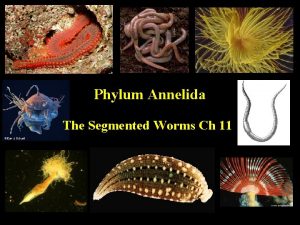Morphology of Nereids Worms Phylum Annelida Segmented worms











- Slides: 11

Morphology of Nereids Worms

Phylum Annelida: Segmented worms - The body consists of many repeated segments, externally usually demarcated by grooves and serial repetition of appendages. Internally compartmentalization of the body cavity by a septum between each segment. - The body wall is composed of an outer layer of circular muscles and an inner layer of longitudinal muscles. - Around 12. 000 species worldwide.

Class Polychaeta: Bristleworms - Marine annelids. - Every body-segment has on each side an extension (parapodium) bearing chitinous bristles (setae). - Separate sexes. - Around 8. 000 species worldwide.

Ecological groups in polychaetes • Errant (active) polychaetes. - Most crawl and/or burrow in benthic habitats; some swim. - Most are carnivores, herbivores or omnivores. - Distinct head with sensory structures (eg. eyes, tentacles, palps). - Parapodia well developed for locomotion. • Sedentary polychaetes. - Burrow or tube dwellers. - Deposit-feeders or suspension feeders. - Lack of sensory organs. - Parapodia reduced. Setae mofidied as hooks to grap sides of tubes.

Errant polychaetes Catworm. Nephtys sp. Ragworm. Nereis sp. Bloodworm. Glycera sp.

Sedentary polychaetes Fanworm. Sabella sp. Lugworm. Arenicola sp. Fam. Capitellidae. Capitella sp.

Family Nereidae - Errant polychaetes. - Long slender body having about 100 or more similar segments. - Well-developed parapods. - Burrow in mud, crawl over the body and occasionally swim.

General nereid morphology

The parapodium

The setae

Locomotion • Slow walking. - Every 4 th parapodium of the ipsilateral side is in phase and 180° out of phase with the contralateral parapodium of the same segment. • Fast walking - The role of the parapodium is sub-ordinate to the waves of contraction that pass forward in the longitudinal muscles. - Forward moving body waves. • Swimming - The longitudinal muscles produce lateral undulations which pass anteriorly along the body. - The parapodia act simply as paddles.
 Metamerism earthworm
Metamerism earthworm Ganglia in annelida
Ganglia in annelida Unsegmented worms phylum
Unsegmented worms phylum Flatworms are the simplest animals with
Flatworms are the simplest animals with Mollusks
Mollusks Platyhelminthes vs nematoda
Platyhelminthes vs nematoda Chapter 27 mollusks and segmented worms answer key
Chapter 27 mollusks and segmented worms answer key Chapter 25 section 2 roundworms and rotifers answers
Chapter 25 section 2 roundworms and rotifers answers Segmented worm characteristics
Segmented worm characteristics Section 27-1 flatworms
Section 27-1 flatworms Segmented worms characteristics
Segmented worms characteristics Feather duster worm symmetry
Feather duster worm symmetry
